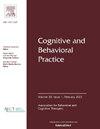魁北克因纽特人对文化安全心理治疗的看法:共同设计认知行为疗法手册和虚拟暴露环境
IF 2.9
3区 心理学
Q1 PSYCHOLOGY, CLINICAL
引用次数: 0
摘要
认知行为心理治疗(CBT)可以与虚拟现实(VR)相结合,提供文化上安全且远程传递的情绪调节干预。我们为努纳维克的因纽特人进行了CBT治疗手册和互补VR环境的共同设计过程。在这里,我们描述了在心理健康和心理治疗方法的适应过程中获得的知识。我们采用了定性、参与性和研究性协同设计方法。在提出VR-CBT的最初概念后,一个由7名被认定为因纽特人或与因纽特人一起工作的成年人组成的咨询小组参加了4次焦点小组会议。对讨论进行了专题分析。咨询小组接受了由治疗师指导个人进行授权和情绪管理的非症状集中方法,取代了症状集中方法。在治疗过程中或治疗过程之间的一些CBT技术被批评或拒绝,并且在某个主题上工作的时间增加了。拟议景观中的一些元素因不安全而被拒绝,而其他元素则因特定文化而增加,以增加安全性。未来的工作应确认更广泛的接受和效用。文化特定因素在接受心理治疗中使用的概念和方法方面起着至关重要的作用。因此,它们可以对治疗的接受度和出席率产生影响。本文章由计算机程序翻译,如有差异,请以英文原文为准。
Views on a Culturally Safe Psychotherapeutic Treatment by Inuit in Quebec: Co-Design of Cognitive Behavioral Therapy Manual and Virtual Exposure Environments
Cognitive-behavioral psychotherapy (CBT) can be combined with virtual reality (VR) to provide culturally safe and remotely delivered emotion regulation interventions. We conducted a co-design process of a CBT treatment manual and complementary VR environments for the Inuit populations from Nunavik. Here, we describe the knowledge gained during the adaptation process on the approach to mental well-being and psychotherapy. We followed qualitative, participatory, and research co-design methods. After an initial concept of VR-CBT, an advisory group made up of 7 adults identifying as or working with Inuit participated in 4 focus group meetings. A thematic analysis of the discussions was carried out. A non-symptom-focused approach with the therapist guiding the individual in empowerment and emotion management was accepted in the advisory group, replacing a symptom-focus. Several CBT in- and between-session techniques were seen critically or rejected, and time for working on a certain theme was increased. Some elements in the proposed landscape were rejected as unsafe, other elements added as culture-specific to increase safety. Future work should confirm broader acceptance and utility. Culturally specific factors play an essential role in acceptance of concepts and approaches used in psychotherapy. Accordingly, they can have an impact on acceptance and attendance in therapy.
求助全文
通过发布文献求助,成功后即可免费获取论文全文。
去求助
来源期刊

Cognitive and Behavioral Practice
PSYCHOLOGY, CLINICAL-
CiteScore
4.80
自引率
3.40%
发文量
118
审稿时长
84 days
期刊介绍:
Cognitive and Behavioral Practice is a quarterly international journal that serves an enduring resource for empirically informed methods of clinical practice. Its mission is to bridge the gap between published research and the actual clinical practice of cognitive behavior therapy. Cognitive and Behavioral Practice publishes clinically rich accounts of innovative assessment and diagnostic and therapeutic procedures that are clearly grounded in empirical research. A focus on application and implementation of procedures is maintained.
 求助内容:
求助内容: 应助结果提醒方式:
应助结果提醒方式:


